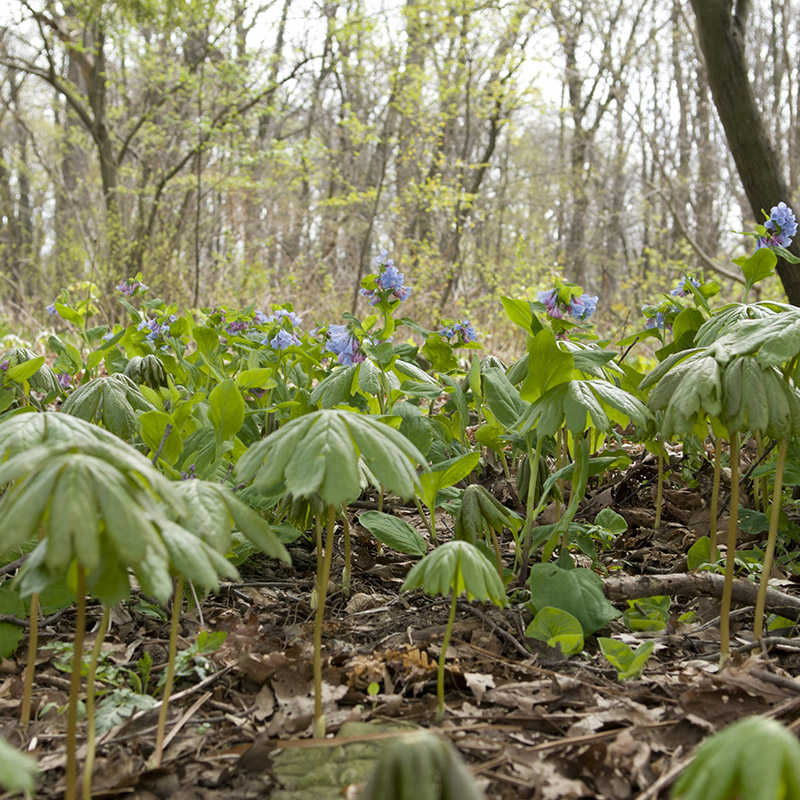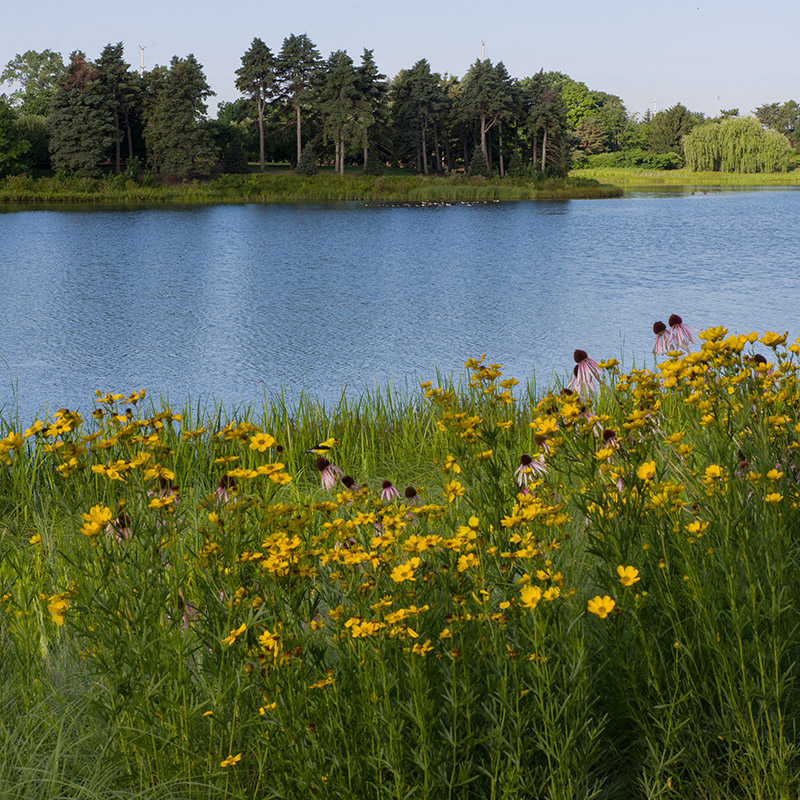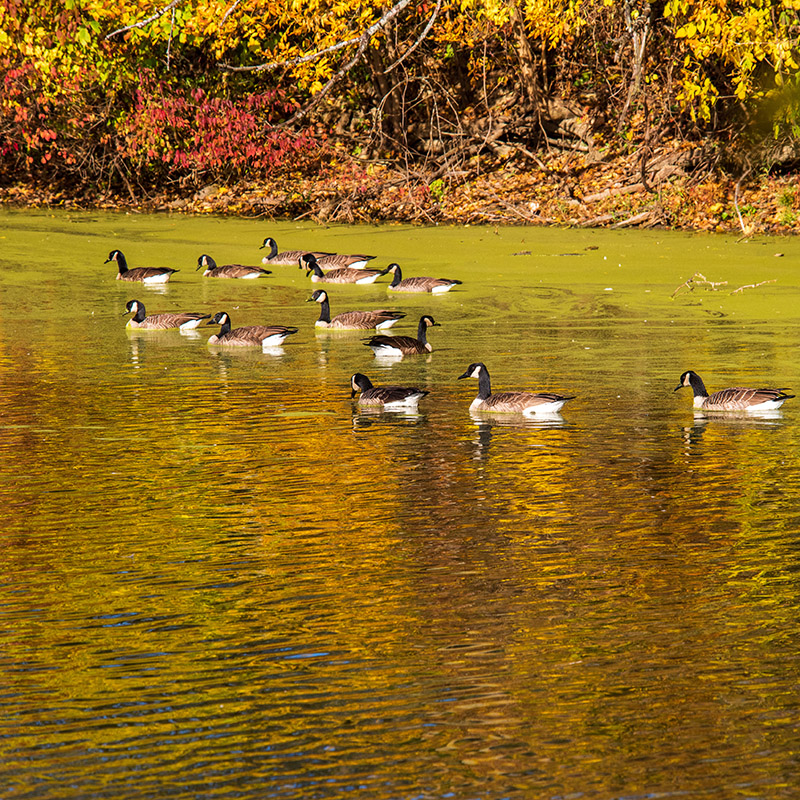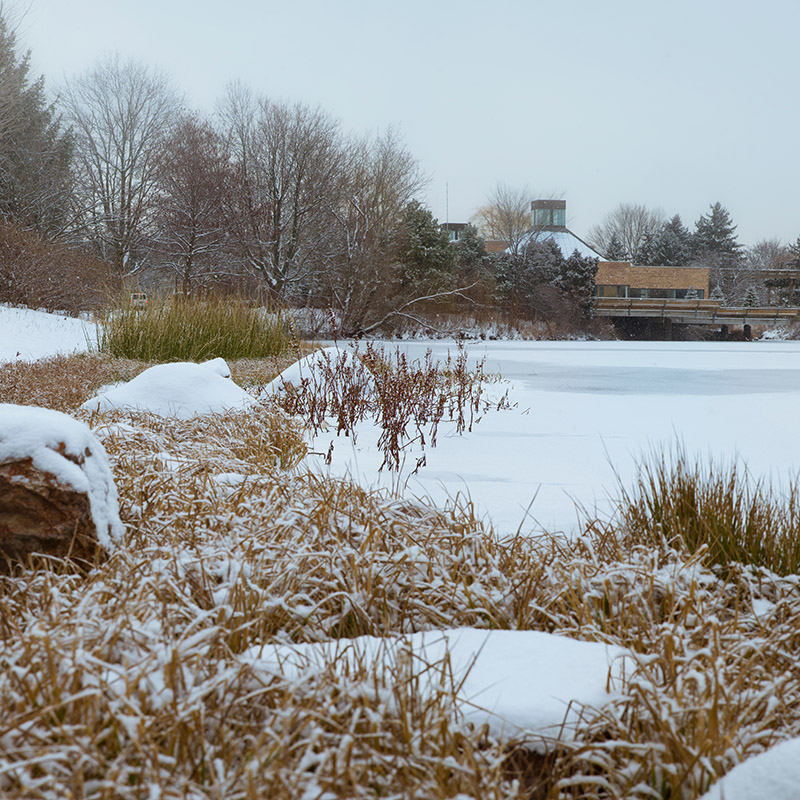The Garden’s shorelines exemplify how native plants can be used to make an attractive garden that both reduces erosion and enhances aquatic habitat.
Our shorelines were not always such an ideal model. In 1998, 80 percent of our shorelines were eroded, a result of steep slopes and turf grass planted along the shoreline. Turf grass lacks the dense deep roots necessary to hold the soil together on the water’s edge. Traditionally, this problem is addressed with hardscape barriers like riprap and sheet piling, but these approaches create little-to-no habitat. Since 2000, the Garden has used a bioengineering approach to shoreline restoration that leverages landscape architecture and native plants as part of the solution. Native plants and their extensive roots keep the soil in place, preventing erosion, increasing resilience to flooding, improving water quality, and providing habitat benefits. In addition to serving a functional purpose, our shorelines provide a much more aesthetically pleasing experience than turf grass or, worse yet, the eroded banks it leaves behind. They also provide habitat for native frogs, turtles, fish, mussels, aquatic insects, and birds. Our shorelines have received local and national recognition from organizations like the North American Lake Management Society and the Landscape Architecture Foundation, and illustrate the value and beauty of native plants in aquatic systems.
Both private and public funds were used to support the Garden's ambitious shoreline restoration efforts, including significant assistance from the U.S. and Illinois Environmental Protection Agencies' Section 319 Nonpoint Source Pollution Management Program, as well as the U.S. Army Corps of Engineers' Section 206 Ecosystem Restoration Program.
It is impossible to miss the beautiful native plants along almost all of the Garden's shorelines. Check out the shorelines as you walk from the Visitor Center to the Regenstein Learning Campus, at the Kleinman Family Cove, as well as around the Lakeside Gardens. Our newest shoreline was planted in 2021 as part of the Shida Evaluation Garden.
Visit in midsummer for blooms and the shoulder months for pristine lake aesthetic.
School field trips and Camp CBG take advantage of the Kleinman Family Cove to learn about macroinvertebrates found in our lakes. Wellness classes are occasionally held at the Cove or near the lake, and art programs often take advantage of our lakes and shorelines for inspiration. And once a year in the summer, our lakes are accessible as part of our annual Canoe Adventure.





